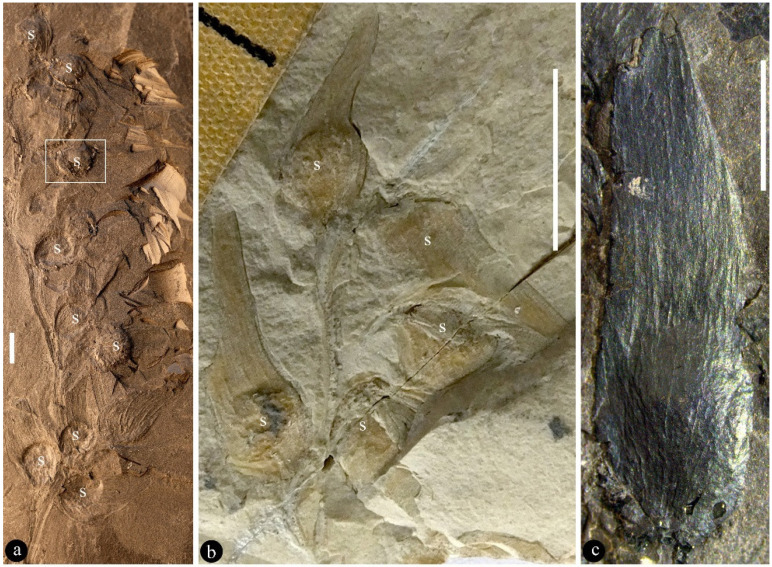Figure 1.
Qingganninginfructus formosa and its enclosed ovules. (a). An infructescence including several fruits spirally arranged along its rachis. Note the ovule (s) within fruits. LZP-2018-02A. Scale bar = 5 mm. (b). A short infructescence including fruits attached to the rachis. Note the ovule (s) within fruits. LZP-1984-58. Scale bar = 5 mm. (c). A coalified single fruit with longitudinal striations. Note the bulging basal part suggestive of an ovule/seed (not visible to naked eyes) in the fruit. LZP-2018-09. Scale bar = 5 mm. (d). Cross view of the basal portion of the fruit shown in Figure S4a, showing two layers of fruit wall (arrows) sandwiching the ovules (s). Shooted following the direction of arrow in Figure S4a. LZP-2018-09. Scale bar = 1 mm. (e). An exposed ovule in a broken fruit, surrounded and partially covered by fruit wall (arrows), which is magnified from the rectangle area in (a). Scale bar = 1 mm. (f). An exposed ovule (s) in a broken fruit, partially covered by fruit wall (rectangle). Refer to (h). Enlarged from the white rectangle area in Figure S5e. Scale bar = 1 mm. (g). Side view of a broken fruit showing fruit shape (arrows) and a basal ovule (s). Refer to Figure S6a. Enlarged from the black rectangle area in Figure S5e. Scale bar = 1 mm. (h). Detailed view of the rectangle in (f). Note the fruit wall (arrows) over the ovule (s). Scale bar = 1 mm.


